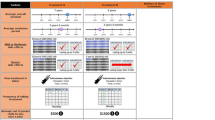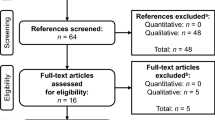Abstract
Background
Against the background of patient involvement, understanding patients’ preferences for treatments is crucial: Do physicians have the same or a different perception of the patients’ preferences? As there is currently no cure for patients with multiple myeloma, primary objectives of treatment are to extend survival at the best possible quality of life. In this study, physicians’ beliefs about patients’ preferences regarding the treatment of multiple myeloma (MM) were explored in a direct assessment and a discrete choice experiment (DCE), and were compared to the previously explored patients’ views. How much do physicians know about their patients’ preferences?
Methods
In a preceding study with German multiple myeloma patients, relevant attributes of an ideal multiple myeloma treatment were collected by reviewing the literature and by conducting a qualitative study with focus groups. The attributes were analyzed using both a direct measurement (16 items on a five-point Likert scale) and a DCE (eight pairs with eight characteristics). For the present study, 30 German physicians reviewed the treatment attributes from the previous study for completeness. A total of 243 physicians participated in the study (including the 30 participants in the pre-test). The direct assessment and the DCE covered four major preference dimensions that both the literature review and the focus groups revealed: Aspects of medical effectiveness (including prolonged life expectancy, effectiveness and long duration of effect), side effects, quality of life (including social, physical and emotional quality of life) and flexibility (breaks in therapy and further treatment options).
Results
In the direct measurement of patients’ preferences, physicians rated physical quality of life (specified as “reduced mobility or good mobility”), rare side effects and effectiveness aspects (duration of effect, maximal prolonged life expectancy and effectiveness) as the most important attributes from the patients’ perspective, followed by emotional quality of life (specified as “Not always think of the disease”) and therapy-free intervals. Especially further treatment options and dosage were more important to patients than physicians believed. In this case, the physicians had quite obviously underestimated the importance of these attributes from the perspective of those affected. Physicians ranked prolonged life expectancy as relatively the most important and significantly more important than all other treatment attributes. Further treatment options were the second most important attribute and significant compared to the attributes breaks in therapy and physical quality of life, whereas the patients ordered these two attributes in reverse order. Similarly, the patients gave the opposite relative importance to the next two priorities: self-application of treatment and emotional quality of life.
Conclusions
Asking patients or physicians about the multiple myeloma patients’ treatment preferences, the combination of direct assessment and DCE proves to be a valid survey technique. Over a broad range of treatment attributes, the physicians’ perceptions of preferences were very close to those of multiple myeloma patients. Both the direct assessment of importance in order to rank the patient perceptions and the DCE provide important insights into the preference structure of patients with multiple myeloma. The findings can subsequently be used as a basis for tailoring health care services for multiple myeloma patients in reference to their preferences.




Similar content being viewed by others
References
Medicine, I.O.: Crossing the quality chasm. A new health system for the 21st century. National Acad. Press, Washington, DC (2001). XX, 337 S
Shaller, D.: Patient-Centered Care: What Does It Take? Picker Insitute and The Commonwealth Fund (2007)
Wisloff, F., Hjorth, M.: Health-related quality of life assessed before and during chemotherapy predicts for survival in multiple myeloma. Nordic Myeloma Study Group. Br. J. Haematol. 97(1), 29–37 (1997)
Moeremans, K., Annemans, L.: An update: health economics of managing multiple myeloma. Eur. J. Cancer 42(11), 1684–1691 (2006)
Goldschmidt, H.: Multiples Myelom. Epidemiologie, Ätiologie und Pathogenese. Der Internist, New York, 47 H. 2 (2006)
Richardson, P.G.: A phase 2 study of Bortezomib in relapsed, refractory myeloma. N. Engl. J. Med. 348(26), 2609–2617 (2003)
Richardson, P.G.: Bortezomib or high-dose dexamethasone for relapsed multiple myeloma. N. Engl. J. Med. 352(24), 2487–2498 (2005)
San Miguel, J., et al.: A practical update on the use of bortezomib in the management of multiple myeloma. Oncologist 11(1), 51–61 (2006)
Dubois, D., et al.: Descriptive and prognostic value of patient-reported outcomes: the bortezomib experience in relapsed and refractory multiple myeloma. J. Clin. Oncol. 24(6), 976–982 (2006)
Gulbrandsen, N., Hjermstad, M.J., Wisloff, F.: Interpretation of quality of life scores in multiple myeloma by comparison with a reference population and assessment of the clinical importance of score differences. Eur. J. Haematol. 72(3), 172–180 (2004)
Wisloff, F., Gulbrandsen, N.: Health-related quality of life and patients’ perceptions in interferon-treated multiple myeloma patients. Nordic myeloma study group. Acta Oncol. 39(7), 809–813 (2000)
Mühlbacher, A.C., Lincke, H.J., Nübling, M.: Evaluating patients’ preferences for multiple myeloma therapy, a discrete-choice experiment. Psychosoc. Med. 5, Doc10 (2008)
Backhaus, K., et al.: Multivariate Analysemethoden. Eine anwendungsorientierte Einführung, 11th edn. Springer-Lehrbuch, Berlin (2005). [u.a.]: Springer. VII, 830 S
Bortz, J.: Statistik für Sozialwissenschaftler. 5., vollst. Überarb. und aktualisierte Aufl. ed. Springer-Lehrbuch, Berlin (1999). [u.a.]: Springer. XV, 836 S
Ryan, M., Gerard, K., Amaya-Amaya, M.: Using discrete choice experiments to value health and health care. The economics of non-market goods and resources; 11. Springer, Dordrecht (2008). XIX, 254 S
Telser, H., Nutzenmessung im Gesundheitswesen. Die Methode der Discrete-Choice-Experimente. Schriftenreihe volkswirtschaftliche Forschungsergebnisse; Bd. 78. Hamburg: Kovac (2002). XIII, 173 S
Lancsar, E., Louviere, J.: Conducting discrete choice experiments to inform healthcare decision making: a user’s guide. Pharmacoeconomics 26(8), 661–677 (2008)
Lancsar, E., Louviere, J., Flynn, T.: Several methods to investigate relative attribute impact in stated preference experiments. Soc. Sci. Med. 64(8), 1738–1753 (2007)
Ben-Akiva, M.E., Lerman, S.R.: Discrete choice analysis. Theory, application to travel demand. MIT Press series in transportation studies, Cambridge, Mass (1985). [u.a.]: MIT Press. XV, 390 S., Tab.: zahlr. graph. Darst
Acknowledgments
The patient interest groups MM (APMM and DLH) assisted in the organization of the collection of qualitative and quantitative data. The research was financed with support from Ortho Biotech, Division of Janssen Cilag, Neuss, Germany.
Conflict of interest statement
The authors declare that they have no conflicting interests.
Author information
Authors and Affiliations
Corresponding author
Rights and permissions
About this article
Cite this article
Mühlbacher, A.C., Nübling, M. Analysis of physicians’ perspectives versus patients’ preferences: direct assessment and discrete choice experiments in the therapy of multiple myeloma. Eur J Health Econ 12, 193–203 (2011). https://doi.org/10.1007/s10198-010-0218-6
Received:
Accepted:
Published:
Issue Date:
DOI: https://doi.org/10.1007/s10198-010-0218-6




